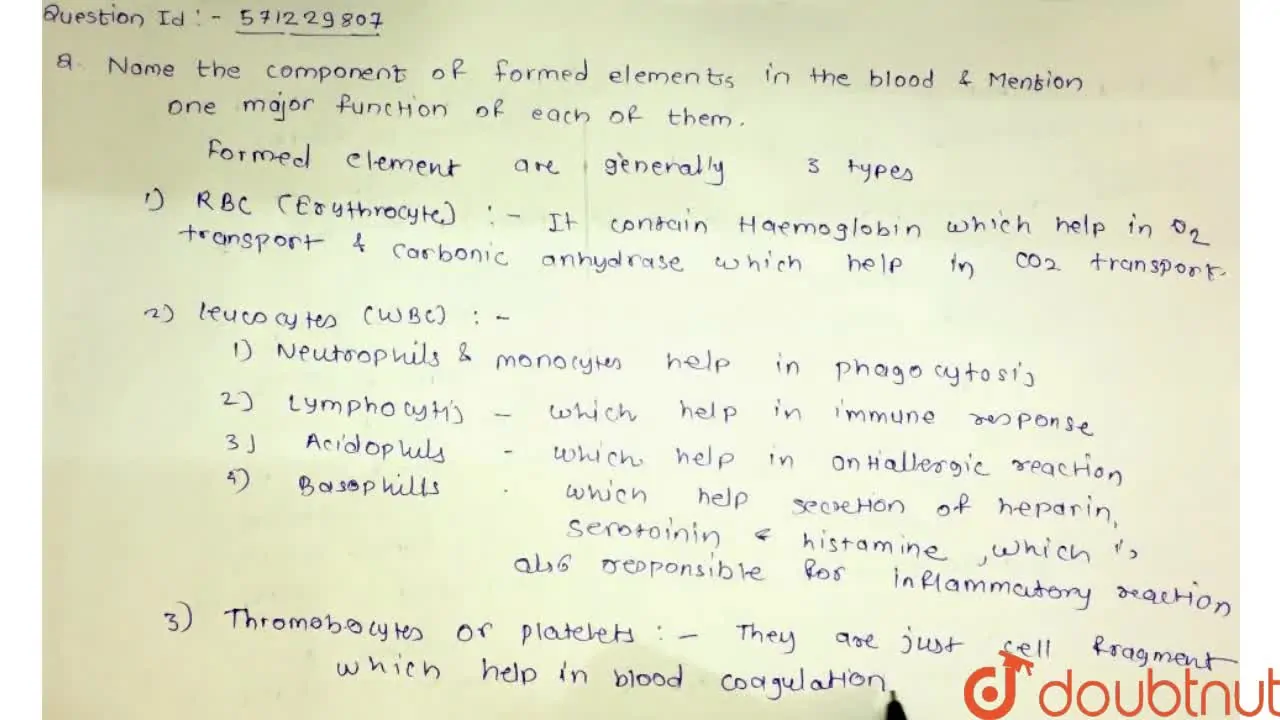Name the components of the formed elements in the blood and mention one major function of each of them.
Video Solution
Text Solution
The component elements in the blood are:
(1) Erythrocytes:
They are the most abundant cells and contain the red pigment called haemoglobin. They carry oxygen to all parts of the body. Red blood cells are produced continuously in some parts of the body such as the marrow of long bones, ribs, etc. There are about 4 – 6 million RBCs per cubic millimetre of blood.
(2) Leukocytes
Leucocytes are colourless cells. These cells do not contain haemoglobin. They are the largest cells of the body and are divided into two main categories.
(a) Granulocytes
These leucocytes have granules in their cytoplasm and include neutrophils, eosinophils, and basophiles. Neutrophils are phagocytic cells that protect the body against various infecting agents. Eosinophils are associated with allergic reactions, while basophiles are involved in inflammatory responses.
(b) Agranulocytes
Lymphocytes and monocytes are agranulocytes. Lymphocytes generate immune responses against infecting agents, while monocytes are phagocytic in nature.
(3) Platelets
Platelets are small irregular bodies present in blood. They contain essential chemicals that help in clotting. The main function of platelets is to promote clotting.
|
Updated on:21/07/2023
Related Playlists
Similar Questions
Name the Components of blood
View SolutionThe volume occupied by formed elements in the blood is
View SolutionName the enucleate component of the blood cells.
View SolutionMention one function of the protein hirudin.
View SolutionList various components of xylem. Give basic feature and one important function of each of these.
View SolutionMention the two main components of the transport system in plants. State one specific function of each one of these components.
View SolutionName the ovarian hormones and give functions of any one of them.
View SolutionMention one function each of the following organs.
TeethView SolutionWrite two major functions each of testis and ovary.
View SolutionWrite two major functions each of testis and ovary.
View Solution


